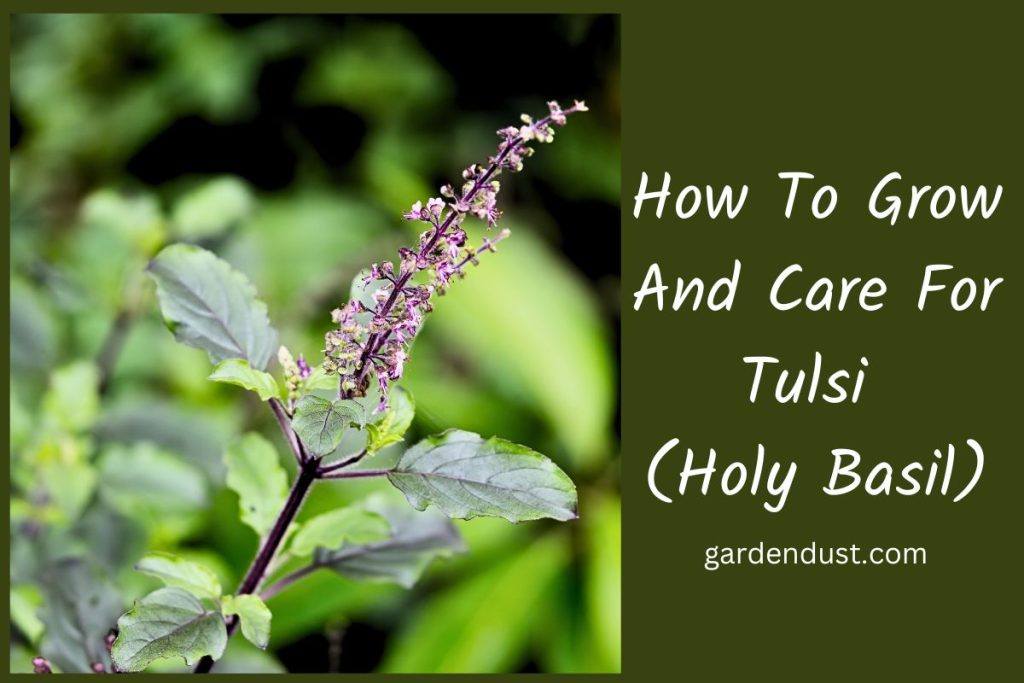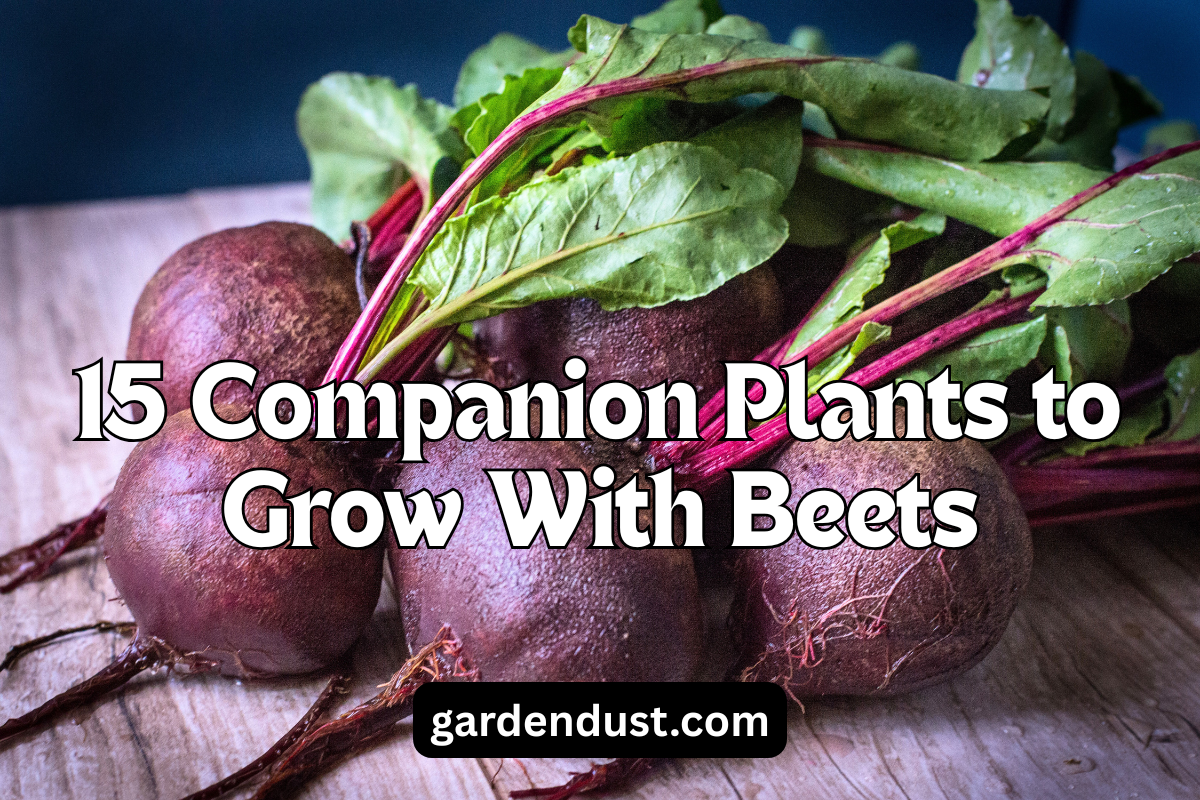Tulsi, also known as Holy Basil, is a revered herb in many cultures for its numerous health benefits and spiritual significance. Its aromatic leaves and medicinal properties make it a must-have addition to any garden. Whether you’re an experienced gardener or a novice, cultivating Tulsi can be a rewarding and relatively straightforward endeavor. In this comprehensive guide, we’ll take you through the steps to how to grow and care for Tulsi (Holy Basil) successfully grow and care for this sacred herb.
Botanical Name: Ocimum sanctum (formerly Ocimum tenuiflorum)
Family: Lamiaceae (the mint family)
Usages of Tulsi (Holy Basil) –
Tulsi, or Holy Basil, serves a multifaceted role in our lives. Its medicinal applications range from aiding respiratory health, digestive wellness, and inflammation reduction to supporting the immune system and providing a rich source of antioxidants. In the culinary realm, it lends its unique aroma and flavor to teas, curries, and various dishes, enriching our palates. Sacred in Hinduism, Tulsi holds a spiritual significance, gracing temples and rituals, and adorning prayer beads for meditation. Beyond this, it finds a place in our personal care routines, offering potential skin and hair benefits. Tulsi’s aromatic essential oil enhances aromatherapy, soothing our minds in stressful times. This herb’s diverse usages reflect its deep-rooted cultural, spiritual, and medicinal importance in various traditions around the world.
Planting and care for Tulsi (Holy Basil)-
Choosing the Right Variety
Tulsi comes in various varieties, each with its unique characteristics and uses. The most common types are:
- Rama Tulsi (Ocimum sanctum): Known for its green leaves and a mild, sweet aroma, Rama Tulsi is widely used in Ayurvedic medicine.
- Krishna Tulsi (Ocimum sanctum): With dark purple or black leaves, Krishna Tulsi has a distinct peppery flavor and is also revered for its medicinal properties.
- Vana Tulsi (Ocimum gratissimum): Vana Tulsi, or Wild Holy Basil, is less common but highly aromatic. It has a strong, clove-like scent and is often used for its medicinal value.
Selecting the Right Location
Tulsi thrives in warm, tropical climates and requires plenty of sunlight. When selecting a location for your Tulsi plant, keep the following factors in mind:
- Sunlight: Ensure your Tulsi receives at least 6-8 hours of direct sunlight daily. If you live in a region with scorching summers, providing some afternoon shade can help prevent the plant from overheating.
- Soil: Tulsi prefers well-draining soil with a pH level between 6 and 7. You can improve soil quality by adding organic compost to enhance its fertility and moisture retention.
- Space: Give your Tulsi enough room to grow and spread. Planting it in a pot or container is an excellent choice if you have limited garden space.
READ ALSO:-How To Grow And Care For Chives
Watering and Maintenance
Tulsi is relatively low-maintenance, but proper care is essential to ensure healthy growth:
- Watering: Water your Tulsi plant regularly, but avoid overwatering, which can lead to root rot. Let the top inch of soil dry out between watering. Early morning is the best time to water your Tulsi.
- Pruning: Regularly prune your Tulsi to encourage bushy growth and prevent it from becoming leggy. Pinch off the tips of branches to encourage branching and harvesting.
- Fertilization: Feed your Tulsi plant with a balanced, organic fertilizer every 4-6 weeks during the growing season (spring through early autumn). Avoid over-fertilizing, as it can lead to excessive growth with reduced flavor and aroma.
- Mulching: Apply a layer of mulch around the base of your Tulsi plant to retain moisture, regulate soil temperature, and prevent weed growth.
Pest and Disease Management
Tulsi is generally resistant to most pests and diseases, but it’s essential to keep an eye out for common issues such as aphids, whiteflies, and fungal diseases. Here are some preventive measures:
- Neem Oil: Neem oil is an effective organic remedy for pests. Mix it with water and spray it on your Tulsi plant to deter common garden pests.
- Companion Planting: Planting marigolds, mint, or other aromatic herbs near your Tulsi can help repel pests.
- Good Air Circulation: Ensure proper air circulation around your Tulsi plant by spacing them adequately and removing dead or yellowing leaves.
- Well-Draining Soil: Avoid waterlogged soil, as it can lead to root rot and fungal diseases. Proper drainage is essential.
Harvesting Tulsi
The best time to harvest Tulsi is in the morning when the essential oil content is at its peak. Follow these steps for a bountiful harvest:
- Use clean, sharp scissors or pruning shears to snip off the top leaves and stems, leaving at least two sets of leaves on the plant for regrowth.
- Harvest regularly, but avoid taking more than one-third of the plant at a time to allow for continuous growth.
- After harvesting, gently wash and dry the leaves, and store them in a cool, dark place to maintain their flavor and aroma.
Propagation Methods
Tulsi can be propagated through seeds, cuttings, or transplants. Here’s how to get started with each method:
- Seeds: Sow Tulsi seeds in the spring or early summer. Plant them ¼ inch deep in well-prepared soil, and keep the soil consistently moist until germination, which typically takes 1-2 weeks.
- Cuttings: Take 4-6 inch cuttings from a healthy Tulsi plant, remove the lower leaves, and plant them in moist soil. Keep the soil consistently damp until roots develop, which usually takes 2-4 weeks.
- Transplants: If you purchase young Tulsi plants or start them from seeds or cuttings, transplant them into your garden or larger containers once they have several sets of true leaves.
Growing Tulsi, or Holy Basil, can be a deeply satisfying and spiritually enriching experience. By choosing the right variety, providing optimal growing conditions, and following proper care and maintenance practices, you can cultivate healthy, thriving Tulsi plants in your garden or on your balcony. The aromatic leaves and numerous health benefits of Tulsi make it a valuable addition to any garden, as well as an essential herb for culinary and medicinal purposes. Embrace the art of growing Tulsi, and you’ll enjoy its blessings year after year. Happy Gardening…







